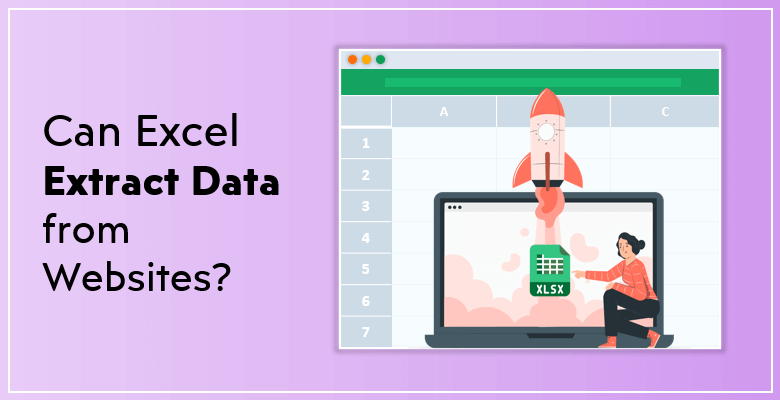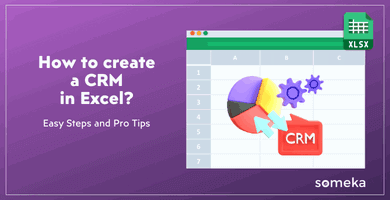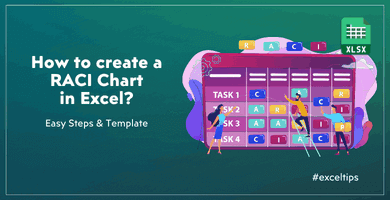
Can Excel Extract Data From Website?
Reaching large amounts of data manually is a lot of work, which is why web scraping exists. The whole process of extracting data from the websites into a new format is called “web scraping”. While copying and pasting such data can take days, web scraping allows them to be extracted from the web in a short time. As you might guess, this process is possible in Excel. It is one of the widely used features for data analysis. By using VBA you can extract any kind of suitable data from the relevant sources. For instance, all the comments under a Facebook post could be easily extracted into your Excel.
Why Is It Important To Extract Data Into an Excel Spreadsheet?
Unlike that most people don’t use or even heard about extracting data in Excel, it is in fact a very powerful side of Excel. It helps you to get many works done easily. Web scraping in Excel has been serving for quite a long time and could be used for many various purposes. What you might get via web scraping is important in improving your business.
See some examples how extracting data is used in different scenarios.
Collecting Industry Insights
Watching market trends for your business and seeking industry insights is a very general usage of data extracting. Companies especially in the e-commerce sector follow the market and the situation of their competitors so that they create needed strategies to improve their current position.
As there are companies that seek such insights, there are also those who prepare and sell them. Some companies scrape data only to sell them to the companies that might need them. They build databases of specific insights for a certain industry, then sell the access to the databases to the companies in the relevant industry.
Lead Generation
This is a common usage of web scraping. Lead generation is basically the process of collecting the contact information of potential customers or clients. It aims to include the target into the processes of a business. Contact details could be extracted from websites like LinkedIn. Lead generation is relatively easier for B2B (business to business) cases as company profiles are more likely to find on the internet.
Sentiment Analysis
Data scraping from social media platforms about a specific topic is used to analyze the reactions and perceptions; in other words: sentiment analysis. Companies evaluate their marketing or advertising campaigns based on this type of data, so do political parties follow their campaigns. Such data is collected from websites like Twitter. If people are tweeting about a topic for instance, then this info flood is a source to many.
Stock Market Analysis
A great benefit of web scraping is that it allows you to reach the stock markets. Especially if you are a financial analyst, by using this feature you can monitor the rapid changes in the market or automatically get the current currency rates. You extract the data by clicking; make conversions easily and even canalize these data to any financial model you work on.
Price Comparison
You can collect pricing data and make price comparison between shopping channels. In this way, you will be provided by the current price data and see which option gives you the best deal. It is a benefit even for your daily activities; great to use when you want to do shopping for yourself and find the best price you can.
Website Transition
Imagine you have a website and you want to move it into another platform without losing your content. While transferring a website content into another, web scraper is what we need. That large amount of data could not be handled manually, scraping data is inevitable. So companies use that for website transition and extract their crucial data on to their new platform.
Use Excel As a Tool To Pull Data From a Website
We covered why getting data from the web is important and where it can be used. But how and via what can we do it? There are main methods for data extraction.
Python: is a programming language which can be used for web scraping. An understandable syntax and its ease of use for coding make Python a preferable method. It extracts the data by writing a code and running it.
VBA: is Excel’s Macro feature that also works for data extraction from the web. You can prefer that way if you don’t mind writing a couple of coding. Here you operate web scraping either by downloading the website’s data or parsing its HTML.
Scraper Tools: are software specially developed for this purpose. They all have unique features and don’t require any coding. Some of the most popular ones are ParseHub, Import.io, Dexi.io, Scraper API, ScrapingBee, Diffbot, BeautifulSoup, and Coupler.io to pull your data from various apps to Google Sheets as an alternative.
Build in Excel data tables scraping tool:
- Create Web Query:
- Open an Excel workbook.
- Go to Data > Get External Data and click on From Web.
You will see a “New Web Query” window with an address bar.
Copy the URL of the page you want to extract data from and paste into the address bar and click Go.
New Web Query window will be displayed with tables from the web page.
Import Data:
You will see black arrows in yellow boxes next to each table. Click on the ones next to whichever table you want to get data from.
After selecting your table the arrow box will turn into a checkmark. Click on the import button to start scraping your data into your worksheet.
In the displayed import dialog box, tell Excel which cell you want to extract data into.
Customize:
Once you scrape your data, you have the chance to edit it all you want. It is optional and depends on your preferences.
- Right-click on the cell with the data. Click “Edit Query”
- Click on the options in the pop-up box that appears.
- Edit and customize the options as you wish.
Auto refresh
It is a one crucial feature of web queries. You can either refresh your data manually by clicking the “Refresh All” button at the top,
Or you arrange your preferences accordingly and let it refresh itself automatically. To do that, right-click on a cell and select “Data Range Properties” from the shortcut menu. In the refresh control section, click the box next to “refresh every” and specify how often you want your data to refresh itself.
Excel Can Provide Real-Time Stock Data
If getting data from the web in Excel is good; then getting real-time stock data is even better. You can access stocks, bonds, mutual funds, currencies and cryptocurrencies via this option. Learn how to do it by following the steps.
- Enter your stock names or ticker symbols into the relevant cells.
- Select the cells then go to Data tab and click on the Stocks under the Data Types.
- Your cells will be filled with linked stock data, now you can add some specific information by clicking the Add Field icon at the upper right corner.
Stock Price Calculator in Excel!
This is how you can reach real-time stock data in Excel however, it still means a bit of effort and you need to arrange details manually. Instead, you can have a special tool to do it for you. Meet Stock Price Calculator! The easy way of fetching the real-time stock data. All you need to do is enter your stock symbols and the template will do the rest for you. You can see the performance of your stocks in seconds thanks to this tool. It gives you the opportunity to examine your gains or losses and the values in your portfolio.
Interested in templates more like this? Then, do not forget to check our Currency Converter Template in Excel which lets you track both historical and current rates.
Limitations Of Using Excel For Data Scraping
Excel might be great, but like anything else it has imperfections. We should highlight the limitations and mention what kind of difficulties we might face when using Excel for scraping data. Here are some of the disadvantages of Excel when it comes to web scraping.
- Lack of continuity: Excel is good at extracting HTML tables, but when it comes to handling large amounts of data then it may not be as helpful as you wish since it is not scalable. The type of data you can extract by using Excel is only the ones in table format and that is a limiting factor.
- Speed: Excel could get really slow while processing the data; it may not be as quick as some other web scraper tools therefore it costs the user extra time. Because that extracting data from multiple resources or consolidating data can be time-consuming, it may cause delays and prevent getting results quickly.
- Errors and mistakes: Excel is not human error-proof. Many changes are being done manually which brings possible mistakes. You cannot test or check the spreadsheets and mistakes become overlooked. A crucial part of the data could be lost and this may have critical consequences.
- Security issues: Lack of controls and its vulnerability to corruption makes Excel a relatively non-secure platform. Security bugs could be threatening, so users better be careful about protecting their data.
- Difficulty for collaboration: If there is a group action that requires access by multiple users and common work, then Excel might be exhausting. If team members are long-distanced from each other, they may have difficulty to work on the same document. It is even harder to gather the final document and keep it updated.
FINAL WORDS
Even though Excel has some limitations, it still is a proper solution to your scraping needs from many aspects. If you use the powerful features of Microsoft Excel, extracting data from the websites could be quite practical. You can benefit from web scraping for improving your business, following the markets or even enhancing the SEO of your own personal website.


